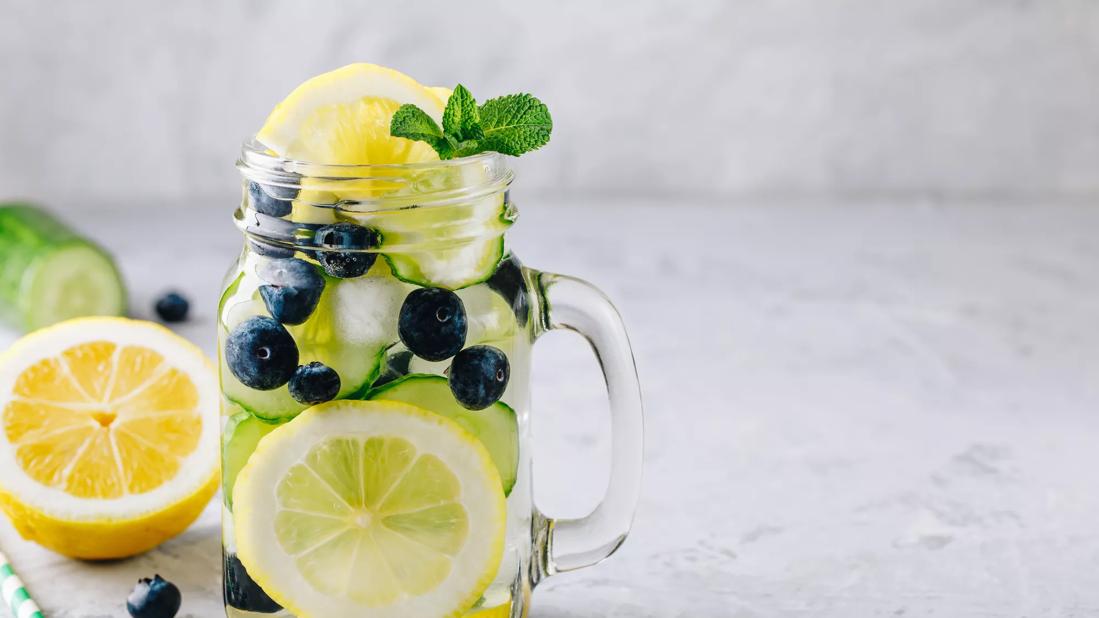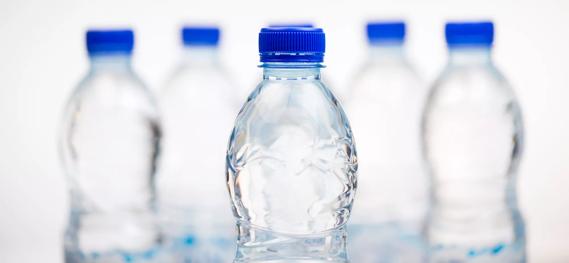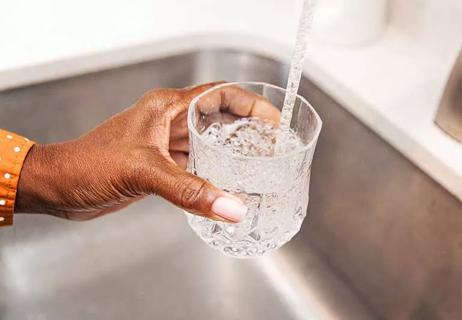If you’re trying to drink less soda or fewer sugary drinks, flavored water can be a delicious and healthy alternative

When you fill a glass with some ice and open the fridge, what kind of beverage do you go for? Regular, plain old water? Or maybe a carbonated, less healthy but arguably better-tasting option you have on hand?
Advertisement
Cleveland Clinic is a non-profit academic medical center. Advertising on our site helps support our mission. We do not endorse non-Cleveland Clinic products or services. Policy
Given the choice, most of us would likely choose something flavorful over something bland, even if it means sacrificing a small part of our daily fluid intake and nutritional goals. But what if you could drink water without feeling like you’re missing out on all the flavors you love?
It may take a bit of time and preparation, says registered dietitian Beth Czerwony, RD, LD, but once you start flirting with flavored water experimentation, you’ll realize just how much it can pay off in the long run in terms of your health (and your taste buds).
You can enhance the flavor of water by adding natural ingredients or synthetic flavor enhancers. You can do this on your own or you can purchase a number of flavored water products that include sparkling waters, low-calorie waters, caffeinated waters and other fortified water-based beverages.
A healthy way to flavor your own water is to add fruits, veggies or herbs directly to the water itself. You can leave these whole, slice them, dice them or — for a stronger flavor — muddle them in your pitcher or glass. If you muddle them, you may want to strain out the pulp before drinking it, lest you be faced with a gelatinous blob at the bottom of your glass and twigs of cilantro stuck between your teeth.
Advertisement
The longer your ingredients are infused in your water, the more flavorful your water will be. So, try infusing your water overnight for the best results. Looking for some great ingredients to try out for your first infusions? Give these a go:
“It’s a really good way to change up the flavor profile,” says Czerwony. “You’re not going to get many nutrients from the food because you’re not going to be consuming enough of it, but it gives your water a little bit something extra for when you want to jazz it up and you’re tired of just plain old boring water.”
Low-calorie syrups and flavor enhancer packets are also available to boost the taste of your water. You can use these exclusively or add them to any of the ingredients above to create any number of different flavor combinations that inspire you to drink more water.
“A lot of times, flavor enhancers or low-calorie syrups have such a powerful, flavorful punch that you don’t need to add a lot to enjoy them,” says Czerwony. “They come in all different flavors and they’re nice if you’re used to drinking juices or other drinks that are higher in sugar like lemonades or fruit punches.”
Flavored water can actually be good for you, especially if you’re using it to kickstart your health journey or lean into some new healthy habits like weaning yourself off of sodas, sugary drinks and concentrated fruit juices.
“A lot of times, people who choose to start drinking flavored waters have a health concern, or they’ve started a health journey that they’re interested in doing for a number of reasons, and they have to figure out how to wean themselves off of unhealthier options,” illustrates Czerwony.
“Mimicking some of the beverages you like to get something a little bit different with flavored water is one healthy alternative that goes a long way.”
As you become more hydrated, you have more energy. As you have more energy, you feel less fatigued. You sleep better, you perform better. These changes, says Czerwony, certainly don’t happen in a vacuum and they don’t happen overnight. It’s just one small part of a healthy lifestyle. But the small intentional steps to drink water every day have real long-lasting impacts on your overall health because water has many health benefits.
“If you’re drinking three regular sodas or coffee drinks a day, replace every other with a flavored water and see how you do with that,” she suggests.
Advertisement
“Another thing you can do is drink two bottles of regular water and then drink two bottles of flavored water as a treat. But however you decide to balance it out that’s going to make your goal for water successful is really up to you.”
You can have fun with it, too. The interest in flavored water has developed into a larger trend known as WaterTok. Some have devoted entire water bars in their homes to create different mixtures, tinctures and flavor combinations as part of an ongoing focus on water recipes and water mixology.
On the surface, creating fun and funky flavors for your water-based drinks is healthy for you as long as you’re not overdoing it.
“If you’re drinking in excess where you’re not eating and you’re not hungry, that’s a problem. In rare cases, you can also throw off your electrolytes and have low sodium and low potassium because you’re drinking so much fluid,” warns Czerwony.
“If you have health conditions like kidney disease or congestive heart failure where you have to watch your fluid level, those are the times when you need to be cautious about any types of fluids, whether they’re flavored or unflavored.”
For flavored water to be healthy, you also want to keep an eye out for:
Advertisement
As long as you’re keeping an eye on your sugar and caffeine intake and you’re not having any unwanted side effects or negative symptoms associated with what you’re eating and drinking, flavored water is a good step in keeping your body hydrated.
Advertisement
“Test the water to see what you like, what works for you and your routine and then have fun with it,” encourages Czerwony.
Learn more about our editorial process.
Advertisement

Consumption needs vary based on activity, weather, metabolism and other factors

A glass of lemon water in the morning can help with digestion and boost vitamin C levels, and may even help get you into a better routine

Mold and bacteria in your reusable water bottle can cause health issues like infections, respiratory issues and allergic reactions

Sitting in the dry heat may help reduce stress, improve heart health and relieve pain

Adding salt to your water isn’t going to have measurable benefits — but there may be plenty of downsides

Drinking untreated water can have dangerous consequences, like bacterial infections

Although it adds to your hydration, this water may be pushing you over the limit of the daily recommended dosage of caffeine

Your home’s tap water should be safe to drink, but you can install filters and run tests to be sure

Babies can get congested easily, but you can calm their cough by keeping them hydrated, using nasal drops and running a humidifier

Weight loss may cause loose, sagging skin and muscle loss to your rear

Several conditions, like vitiligo and fungal infection, can cause a loss of pigmentation, leading to white spots or patches on your skin